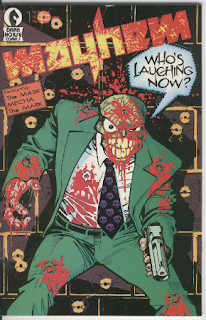The time to record another episode of 24 Panels Per Second is almost upon us folks, and this time we are going to delve into our deep-seeded psychological issues as we tackle Ang Lee’s 2003 psycho-drama-come-superhero film,
Hulk.

The Hulk character first appeared in The Incredible Hulk #1, published in 1962. Created by the legendary duo of Stan Lee and Jack Kirby, the story of the Hulk is that of Bruce Banner, a brilliant scientist and inventor of a gamma radiation bomb. During a test of this bomb, teenager Rick Jones accidentally enters the testing site, which leads Bruce out into the field to try and save Rick. Banner’s heroism succeeds, but at the cost of him being exposed to the bomb’s deadly rays. Instead of killing him though, the rays transform Banner into an initially grey skinned beast dubbed “the Hulk” before eventually settling onto a standard green skinned appearance. Somewhat intelligent, increadibly strong and filled with rage, this Hulk persona originally appeared by moonlight, only for the transformations to later be controlled by Banner through technology. Finally, these transformations would be triggered by Banner experiencing strong emotions, resulting in him being alienated from the world around him.

Unable to control the Hulk, Banner was early on looking for a cure, running into dangerous foes looking to take advantage of the Hulk on occasion, and being pursued by the military looking to wipe the Hulk out. These military forces were led by General Thunderbolt Ross, a man with a Captain Ahab-like obsession with Banner and his alter-ego. Ross also happens to be the father of Betty Ross, Banner’s love interest. Supporting Banner in his endeavours is the guilt ridden Rick Jones, who is determined to help Banner and the Hulk however possible.
From these humble beginnings as an atomic age Jekyll and Hyde, the Hulk would increasingly develop into a complex character drama and tragedy, as Banner is revealed to have a complex psychology which informs the appearance and personality of the Hulk creature. Furthermore, Banner's condition radically defines his relationship with the people and world around him, and has allowed the character to address a wide variety of issues, from the role and function of science in our society to more personal issues, such as spousal abuse.
The Hulk is arguably the most famous of Marvel’s creations, thanks to large part to the character’s frequent and memorable adaptations in other media. Starting in 1966, Marvel’s creations would be adapted into the television program The Marvel Superheroes, which featured shorts of various Marvel characters, including, for the first time ever, the Hulk:
However, the Hulk most famously was the basis for the 1977-1982 television program The Incredible Hulk. The series starred Bill Bixby as David Banner (supposed reasons for the renaming of the character vary from source to source), who in this version is trying to find a way to tap into innate human strength through gamma radiation, due to his inability to save his wife in a car accident. He experiments on himself, but comes to discover that when he is angry, he transforms into a green beast (Lou Ferrigno). An accident leaves the world convinced that Banner and a colleague are dead, and that the Hulk is responsible. With no way to prove that he didn’t commit murder, Banner takes the road looking for a cure and helping people he comes across, all while being chased by reporter Jack McGee.
A smash hit, the program remains for many people the definitive version of the character, with the program’s iconography and ending theme making their way into the 2008 film adaptation.
Shortly after cancellation, the character would return to animated form in 1982 for a short lived series…
…and again in 1996 in a series which attained critical acclaim in its first season...
...before being unsuccessfully retooled in its second season.
The character would next return to live action cinema in the film we are taking a look at, a film which met with a mixed response from critics and audiences, and so-so box office. Rather than a direct sequel, Marvel Studios would totally reboot the character in the 2008 film
The Incredible Hulk, with Edward Norton taking on the lead role of Bruce Banner. As noted, this film borrowed heavily from both the comics and 1970s/1980s television version of the character, and was again met with mixed response and solid, if unremarkable, box office receipts:
The character will return later this year in the 2012 event film
Avengers. While the character here is a continuation of the version played by Norton in the 2008 film, Mark Ruffalo takes over the role.
Along with the
Avengers film soon to be released, a new television version is in the works, with Guillmero Del Toro of
Hellboy fame helping to develop the series.
However, before we address any of these other adaptations, join us next time as we examine the 2003 film Hulk!












